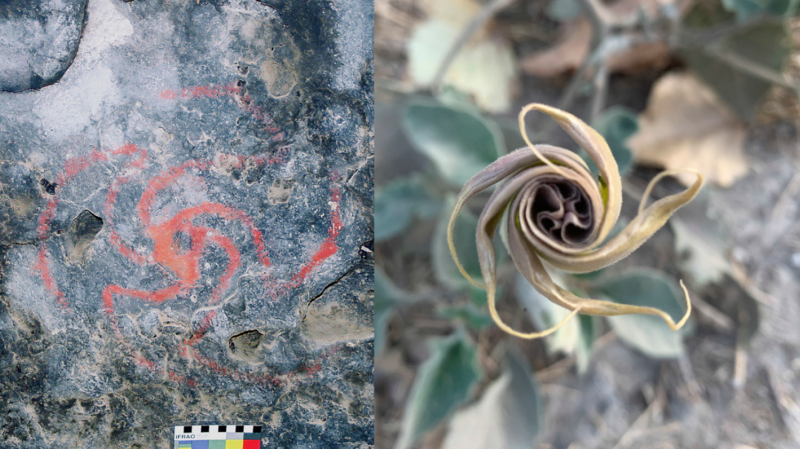Rock art in a California cave was a visual guide to hallucinogenic plants

Enlarge / This red pinwheel image (left), which is around 500 years old, may depict the unfurling petals of a datura flower (right). (credit: Rick Bury and Melissa Dabulamanzi)
At a cave in Southern California, archaeologists recently found centuries-old bundles of hallucinogenic plants tucked into crevices in the low ceiling, near a painting that may depict a flower from the same plant, called datura. The painted images may have been a visual aid to help people understand the rituals they experienced in the cave.
Chew on thisUniversity of Central Lancashire archaeologist David Robinson and his colleagues describe the bundles of leaves and stems tucked into the domed ceiling of California's Pinwheel Cave. The five-armed pinwheel that gives the cave its name is painted in red nearby, attended by a bizarre-looking figure with antennae, eyes pointed in different directions, and a long body. Archaeologists have dubbed it the Transmorph, perhaps because it wouldn't answer to anything else they tried. Based on radiocarbon dates of the bundles, people placed them in the room's nooks and crannies over several centuries, from about 1530 to 1890.
That matches the age of charcoal from nearby chambers in the cave, where people left behind traces of more mundane activities: cooking meat, grinding seeds and nuts, and making stone projectile points. Whatever rituals happened in Pinwheel Cave, they weren't hidden away or separate from everyday life.
Read 12 remaining paragraphs | Comments